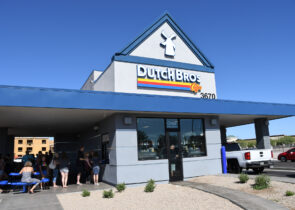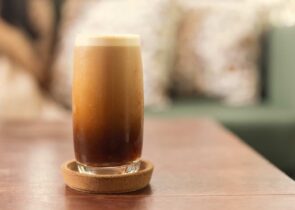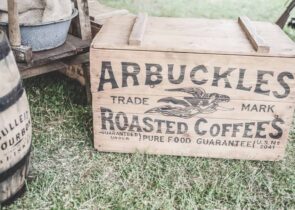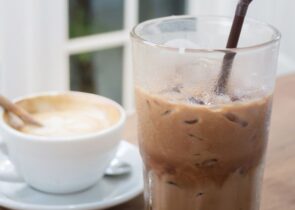If you like to drink coffee, you’ll likely love the control and robust flavor brewing devices like the French Press and the coffee percolator provide. These coffee machines use classic methods for brewing batches of coffee that require a fire or stove to heat warm water. Over the years, people have noticed that even fancy coffee makers on the market can’t quite duplicate the strong brews these two devices provide.
If you haven’t used either brewing method yet, you’ll enjoy experimenting with these coffee brewing techniques. They are also a great backup if your regular drip coffee maker fails to work, you need something more portable, or you get bored with your daily hot coffee routine. Keep reading to learn more about these two coffee brewing devices.

What Is a Percolator?
A percolator is a classic coffee brewing device used on a stove or other heat source to heat water and coffee and ultimately brew it to the ideal flavor.
This device looks like a tea kettle, but it’s not like a tea kettle at all. The purpose of the percolator is to continuously cycle hot water through paper filters filled with coffee grounds to make it stronger and intensify the flavors.
Types of Percolators
There are two primary types of percolators on the market. They include the following:
- The classic version you put on the stove to heat
- The newer electric model with its own heating element
The classic model is great for coffee aficionados without a stove, coffee on the go in a motorhome, or traveling by plane.
The electric version has a heating element located at the bottom of the device. You just plug it into an electrical outlet to begin brewing flavorful coffee.
The stovetop percolator needs to be placed on a stove burner or a flat surface above a fire. You can use a flat cast iron skillet if you’re out camping and want “cowboy coffee”.
This type of percolator is cheaper than the electric version and is perfect for making full-flavored coffee for several campers at once.
However, if you prefer to use an electric percolator, it has features such as an automatic shutoff that add safety.
How to Use a Percolator
The first thing you want to do is put the water in the percolator. You usually fill the device halfway with water.
Next, you’ll need to add the pre-ground coffee to the coffee basket located inside the percolator. Adjust the amounts of coffee grounds according to how much water is in the percolator and how much coffee you plan to make.
The brewing process works better with fresh ground coffee, and you can adjust the strength of the brew for your personal taste by letting it sit longer or adding extra grounds to the basket.
Brew the coffee for up to 10 minutes for the best results. Longer than that will give you bitter coffee.
What Is a French Press?
A French press is a classic coffee-making device used throughout the world. This coffee brewing method is considered the best by many coffee drinkers.
Unlike the percolator, the French press relies on adding pre-heated water from an electric kettle to the water chamber rather than heating it directly on a stove. These coffee makers come in a range of sizes and materials.
Types of French Press
There are large French press options that make up to eight cups of coffee and some that make a single cup of coffee.
Furthermore, some French press devices are made from stainless steel and plastic, while others commonly consist of copper and glass. Common types of French press include the following:
- Glass carafe
- Steel body
- Plastic body
- Copper body
Perhaps the most common type of French press is the glass carafe version.
This type has a glass carafe placed in a frame, which manufacturers make from some sturdy metal, such as copper or steel. If you want durability, steel bodies are the best option.
You can also buy the type with an entirely plastic structure without the carafe if you plan to use it for travel or you don’t like the idea of using glass to brew your coffee.
These versions work well, but you get better wear from the metal versions, but a better-looking device if you use the glass carafe style.
How to Use the French Press
If you want to try using this method of brewing coffee, consider a few things. First, you want to decide how many cups of coffee you want to brew.
If you’re going to brew more robust coffee in the French press coffee maker, you need to add more grounds.
Generally speaking, you will use 1 1/2 to 2 tablespoons of ground coffee per cup.
You may want to experiment with this measurement because the strength of the coffee can depend on the roast you choose and how long you let the coffee brew in the French Press.
Generally speaking, the recommended time for the extraction process in French press coffee pots is seven minutes to pull the maximum flavor from coffee grounds; however, you can leave it brewing for up to 15 minutes.
When you heat your water to make coffee in your French Press, you want to make sure you use purified clean water. Use cold water and then heat it to nearly boiling water temperatures rather than a steady rolling boil.
This helps ensure the coffee comes out tasting smooth and doesn’t get too strong too fast.
If you want potent coffee, you can use a coarse-grind espresso roast coffee bean and brew it in the French Press for approximately 7 to 10 minutes.
French Press Considerations
A few things to consider about brewing delicious coffee in the French press. First, you want to make sure you put the French press on a flat, even surface to prevent spills or even injuries.
Next, you always want to place the cover or plunger on top of the French press while the fresh coffee brews. This action ensures no foreign particles fall into the coffee and contaminate it.
Once the coffee finishes brewing, you want to slowly but firmly press the plunger down. This process helps to separate the coffee grounds from the full-bodied brew.
When pouring coffee from the French Press, always make sure you hold the top of the plunger down firmly to prevent the coffee from spilling over onto your hands or all over the counter surface.
This strategy also helps keep coffee grounds at the bottom of the carafe or container where they belong. Slowly pour the coffee and enjoy the bold flavors of French press coffee.
Which Is Better?
Choosing between percolator coffee or French press coffee comes down to personal preference. The first thing you want to consider is convenience.
Is it more convenient to have a percolator to brew your coffee on the stove or via an electrical outlet? Or would it be better to boil your water separately and then pour it over the coffee grounds and let it brew without using a stove?
If you plan on brewing coffee daily, you have more control over the strength if you use a percolator.
However, you can also brew strong coffee using a French press, but you’ll need to use the right type of coffee and let it sit for the recommended amount of time without letting it sit too long.
The percolator method tends to be easier to control and adjust for flavor, but the French press method produces a more vibrant taste and allows for more flexibility for travel.
Summary
If you’re new to drinking coffee or you’ve never strayed away from today’s commonplace electric drip machines, you need to try both the percolator and the French press.
Each has unique features that make it stand out, and both provide flexibility and flavor. Although some people staunchly defend their selection, you may decide that you like both.
Either is an excellent addition to your home or to bring along for travel.
One note, however, if you plan to travel. Try to avoid using any glass carafe French presses. You should use either a plastic version or the metal variety to prevent shattered glass.
If you use the metal style of either the percolator or the French Press, you get longevity and durability. Plus, you don’t have to worry about the device breaking prematurely.
Although the glass versions look pretty, their functionality decreases unless they’re used carefully within a controlled environment.
Happy Caffeinating!











